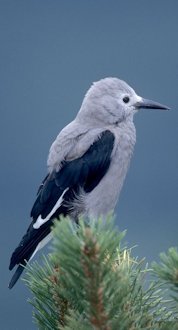
|
Why do birds Migrate? - Page 2
In North America, the ratio of migratory to nonmigratory birds varies greatly from region to region. In high arctic regions (northern Alaska, northern Canada, and Greenland), where many shorebirds and water fowl nest, the entire population often consists of migratory birds who are only there during the summers. In North America, the ratio of migratory to nonmigratory birds varies greatly from region to region. In high arctic regions (northern Alaska, northern Canada, and Greenland), where many shorebirds and water fowl nest, the entire population often consists of migratory birds who are only there during the summers. In the forest and open country of eastern United States, over 80 percent of the nesting land birds are migratory, spending the winter in more hospitable southern climates. There is a similar high percentage of south-migrating birds in inland areas of the West. However, in areas where the climate is more equable, like the Pacific Coast, more species are nonmigratory; in tropical regions at least 80 percent of the birds are nonmigratory. In the Rockies and Sierras of the West, migration often consists of moving from the high to low elevations. Rosy Finches, Townsend's Solitaires, and Mountain Quail perform these movements quite regularly whereas others, such as Clark's Nutcracker, are much more erratic. Some migration schedules do not always closely follow seasonal changes in the weather. For example, since the vegetative food supply of nomadic species such as the crossbills, redpolls, and Pine Grosbeaks fluctuates in abundance from year to year, these birds migrate in some winters and not in others. In contrast, insect-eating birds such as warblers, vireos, and flycatchers that live in the far north have no choice but to migrate from their summer habitats, since their food supply always disappears from sight in winter; their migration therefore tends to involve long distances and regular timing. ⇦ Back to Why do Birds Migrate Page 1 |
| Clark's Nutcracker |